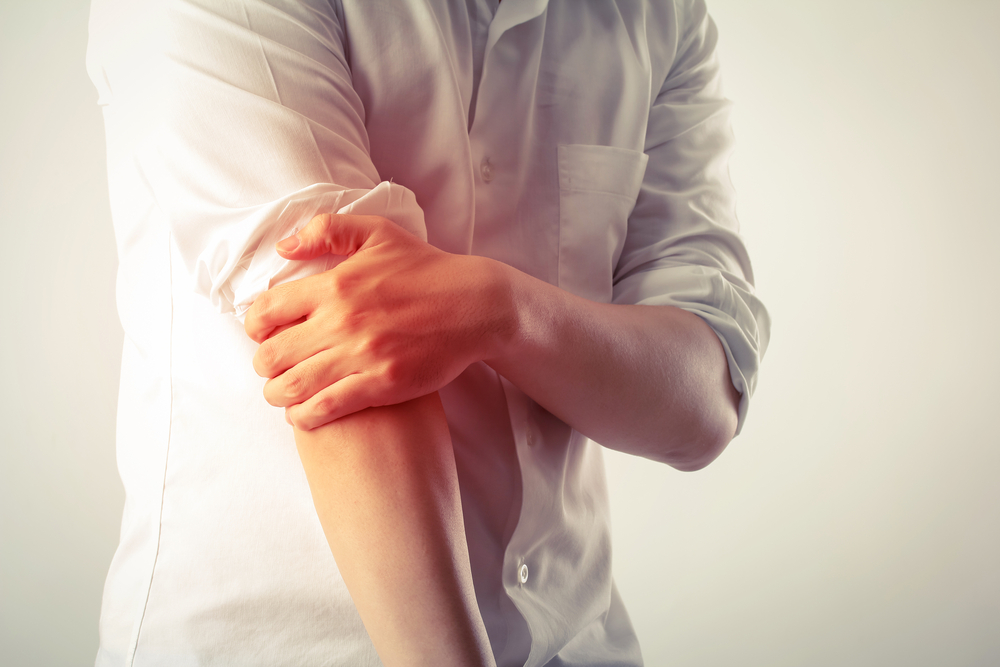Tennis elbow is a painful condition that occurs when the tendons and muscles that attach to the bony area on the outside of the elbow become inflamed. Despite its name, it doesn’t only affect tennis players, although it is one of the most common injuries endured by those athletes. Any activity that requires repetitive arm, wrist, or elbow movement may result in tennis elbow, as the repetitive motion stresses the tendons and causes inflammation.
Tennis elbow generally affects a person’s dominant arm, but it can occur in either or both arms depending on what is causing the condition. Symptoms of the condition include:
- Pain on the outside, bony part of the elbow. It may occur suddenly but is more likely to gradually worsen over time. The area may also be tender to the touch.
- Pain worsens when squeezing an object with the affected arm or when turning the wrist abruptly (such as when opening a jar).
- A weakened grip of the hand on the affected arm.
Who’s most at risk for tennis elbow?
According to this review, 3% of the population experiences tennis elbow, with the highest rates occurring in men and women between the ages of 40 and 50.
Of course, a person’s daily activity and profession play a big part in whether or not they’ll experience the symptoms of tennis elbow. As stated above, tennis players and other athletes that participate in sports that require repetitive motion of the hands and arms are at higher risk.
Additionally, a study published by the American Journal of Sports Medicine found that the following professions have the highest incidence of tennis elbow:
- Office worker
- Secretary
- Health care worker
Treatment options
The most common treatment for tennis elbow is limiting the movement of the affected arm. It could takes days or even weeks of limiting activity for symptoms to recede. A brace may also be used to help limit movement and stabilize the area. If that doesn’t work, your doctor may suggest physical therapy for the injury, which includes massage techniques and stretching and strengthening exercises.
Steroid injections and acupuncture are other options if the first two techniques do not work, as well as prescribed anti-inflammatory medication. And finally, if the pain is incapacitating and lasts for more than a few months, surgery may be necessary to remove the damaged tendon. But it’s not common for surgery to be required and tennis elbow is usually resolved with rest and movement limitation.


Recent Comments